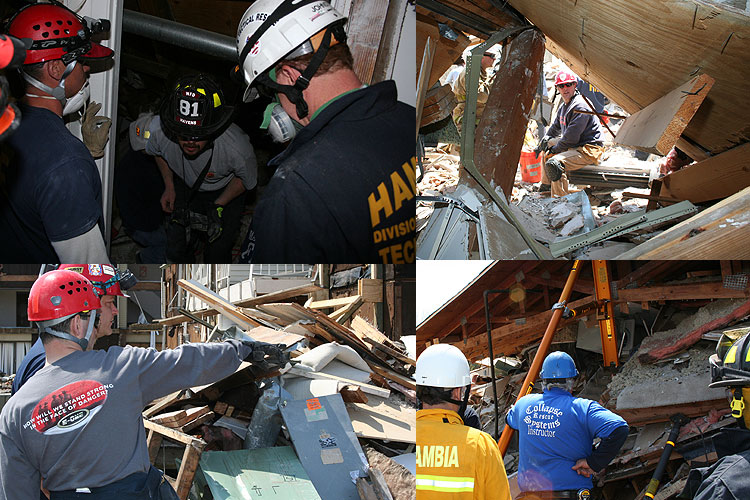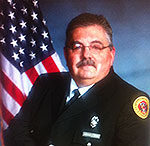

Photos above by Tony Greco
Article By Greg Hewin
When does a body recovery become the most dangerous situation we as rescuers can encounter? It happens when it is no longer a body recovery but it has become a “buddy” recovery. Everything changes for the would-be rescuer. According to National Institute for Occupational Safety and Health, more than 60 percent of confined space fatalities are “would-be-rescuers.” Why is this? Where do most confined space fatalities occur? In the workplace, where the workers/rescuers all know one another. When a recovery effort takes place and it’s a known body recovery, we all take time to make sure we’re doing it by the book. We double check our air supply, we make sure our escape packs are filled. We make sure and monitor the atmosphere. We go through all the checklists. But what if it’s a “buddy” recovery? Now we know the victim; that victim has a name. We know their spouses by name or our kids play together. Now we have a new sense of urgency to act. We are compelled to do something, right or wrong, because this is our buddy.
The psychological response to rescuing one of our own can cause would-be-rescuers to respond with a blatant disrespect for their own safety. One of the key factors that affect our cognitive response is prosocial orientation. Prosocial orientation consists of a positive view of human beings, and a feeling of and belief in one’s personal responsibility for others’ welfare.
We have all learned about misplaced compassion in confined space training or technical rescue training in general. What exactly is misplaced compassion? Why does this cause would-be rescuers to become victims themselves? We have all be trained about the dangers associated with the work environment, as per the Occupational Safety and Health Administration (OSHA), or we should have been (all employees, including fire and rescue personnel, who are expected to conduct or assist confined-space rescue should be protected from all existing or potential hazards through proper equipment, training, and procedures). We understand the risk, but we put rational thinking aside when it’s a buddy and not a body involved.
What exactly is the definition of misplaced compassion? I challenge you to find it. We all have our own conceived idea of its meaning or at least what it means to each and every one of us. Can misplaced compassion be the major factor in the greater than 60-percent fatality rate of would-be-rescuers?
This buddy-vs.-body syndrome doesn’t affect confined space rescuers only. Look at agricultural or farm rescue fatalities, incidents where an entire family has died together trying to effect the rescue of a loved one (“buddy”). How many times have we heard of an excavation crew working at a trench collapse when workers jump into the trench only to become victims themselves? Or a co-worker firing up a piece of equipment to dig out a trapped co-worker, only to pull the victim in half with the equipment?
This term misplaced compassion illustrates the concept of “ethical altruism.” Ethical altruism is an ethical doctrine that holds that the moral value of an individual’s actions depend solely on the impact on other individuals, regardless of the consequences on the individual itself. When we disregard the consequences of individual safety, what we are really doing is disregarding the safety of the entire team. When we do this we are effectively placing our mission to save lives and protect property at a very low position on our personal priority list. Remember, we’re talking about a “body” recovery.
When we are given a rapid intervention team (RIT) assignment, we are always at risk of being deployed as “firefighter rescue” in the event of a Mayday. If this happens, we are essentially being deployed as “buddy” rescue and recovery. We as firefighting professionals will take much more extreme risks when deployed as a RIT than we will when deployed as search and rescue. Why is this? Search and rescue operations are searching for bodies, whereas RIT or firefighter rescue teams are searching for buddies.
Chief Brunacini’s concept of risk vs. benefit says “we should not risk anything for something that is not savable.” This is what we need to be teaching in our technical rescue classes to these would-be-rescuers. We have all been taught this, and if you’re a training officer or instructor you have probably taught this. So why is this a 60-percent-and-greater statistic? What can we do to get would-be-rescuers to stop becoming victims themselves? We can’t change the biological altruism. An article by Rebecca Stigall, entitled “Biological Altruisms: Are We Hard Wired to Behave in a Socially-Caring Manner or to Maximize Personal Gain?” states:
“Some studies indicate that altruism is indeed hard wired into the human brain as well as several other species. In essence, humans can’t help the urge to help. It can be argued that altruistic behavior occurs out of a sense of duty or out of some sort of inner compassion, and the answer is both. Scientists have uncovered evidence that animals may behave in an altruistic manner. Human beings may also behave in a socially altruistic manner due to a connection between empathy and compassion. In other words, the human ability to imagine one’s self in the position of another (empathy) results in a feeling of mutual suffering (compassion). This form of compassionate social altruism is as close to instinctual altruism as humans can get, and is indeed hard wired.”
I read the story of a Buddhist monk, who, after seeing an old, injured, scraggy tiger in a jungle, is flooded with a feeling of compassion and offers himself as food for the animal! Yes, one should be very strong indeed to be compassionate, but at what price? How far should we be willing to go?
This is the same type of compassion, and desire to help, that we instill in our firefighters today. This is Customer Service 101. When does this degree of compassion become misplaced? When does this compromise “the mission, the team, and then me”?
A person who has no empathy for others will coin terms like misplaced loyalty, misplaced compassion, etc. Do we need these people in our departments or on our teams? Misplaced compassion can be used to describe somebody on both sides of the spectrum of compassion/customer service.
We assume that none of these would-be rescuers ever thought that they, themselves, would become victims, yet they all must have felt an urgency to act–to rescue a buddy, or to do the “right thing” even though the correct option would have been to isolate and deny until trained rescuers were on scene.
When we respond to emergency calls as professionals, regardless if were paid or volunteer, we must keep the team and the mission in focus. This means we always weigh the risk vs. the benefit. As fire service Instructors, we must do a better job of educating our students on the hazards of misplaced compassion. They may never get a second chance to get it right.

Greg Hewin is a training officer for the Limestone (OK) Fire Protection District. He began his career as a volunteer, and recently retired from the Tulsa (OK) Fire Department after 28 years of service. He has served as a member of Oklahoma Task Force 1, and is a field instructor for Oklahoma State University Fire Service Training and a technical rescue instructor for Oklahoma State University Fire Service Training’s Industrial Training Division.

